Beverly Gray's Blog: Beverly in Movieland, page 19
December 21, 2023
M is for Miyazaki, Manga Master

The Japanese written languageisn’t really built on an alphabet like ours. So when I say that names startingwith the letter M seem to play a prominent role in Japanese pop culture, I’mspeaking strictly from an American perspective. Still, it’s a curious fact thatone of today’s most significant authors and one of the world’s top contemporaryartists are both surnamed Murakami. Haruki Murakami, born in 1949, has won manyliterary prizes for such eerily prescient novels as 1Q84. TakashiMurakami, now enjoying a major exhibition at San Francisco’s Asian Art Museum, blursart and commerce in his colorful and often outrageous paintings. There’s alsoat least one more celebrated Murakami, the novelist and filmmaker Ryū. Norelation: there seems to be a certain shortage of family names in Japan.(Purists will notice I’m using the western custom of putting each man’s givenname ahead of his surname, the reverse of the traditional Japanese name order.Because, of course, I’m a westerner.)
Anyway, I want to focus onyet another M name: Hayao Miyazaki, the brilliant manga artist and maker ofanimated films, who began directing features back in 1979. So dominant aninfluence is he on the worldwide film industry that when L.A.’s Academy Museumopened last year, an entire floor of exhibition space was dedicated to hiscareer. I was inspired by that beautifully mounted exhibit to watch 2004’s Howl’sMoving Castle, which—thanks to its gorgeous hand-drawn graphics andenchanting plot—remains my favorite Miyazaki film. But the most honored of hisworks is doubtless Spirited Away, from 2001.
Miyazaki’s mature works arehardly blithe comedies. Jolly Disney-style uplift is not for him. (In SpirtedAway, the lead character’s parents are suddenly metamorphosed, over lunch,into pigs.) His films reflect his somewhat sardonic nature, his commitment toenvironmentalism, his belief in strong female characters, and his awarenessthat violence is always lurking. His sense of the omnipresence of war isstrongly felt in his latest film, The Boy and the Heron. It is justcoming into theatres now, a holiday gift for fans who were once dismayed thathe’d called 2013’s The Wind Rises his final film before moving into awell-earned retirement.
I’ve discovered that theopening scenes of The Boy and the Heron are drawn to some extent fromhis own life-experience. Miyazaki wasborn in 1941 into an affluent family. His father, the head of an aircraft company, manufactured parts for WorldWar II fighter planes. When Hayao was three years old, the family evacuatedfrom Tokyo to semi-rural Utsunomiya. Twoyears later, after Utsunomiya itself was bombed by Allied forces, they movedonce again. The horrific sight of a bombed-out city marks the opening of thisfilm. Young Mahito loses his mother in a firestorm; his father (a maker ofaircraft parts) remarries, and he finds himself in a mysterious country homepresided over by tiny, wizened “grandmothers” and talking birds. As always inMiyazaki, life remains unstable: characters radically change their size andidentity, and the boy has to sort out—with great difficulty—his allies and hisfoes. This degree of dark-hued whimsy can be hard on the viewer. It’sdifficult, in a film over two hours long, to keep track of all the connectionsand transformations. Why, for instance, all those evil parakeets?
Did I like The Boy and theHeron? I’m still not quite sure. One thing I did unequivocally love: thosegorgeous painterly backdrops, which seem so much more solid and “real” than thefantastic and sometimes grotesque characters who move through them.
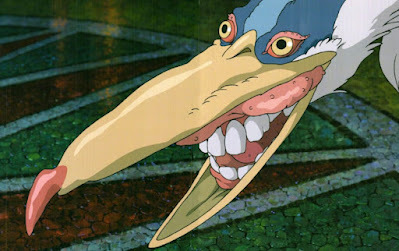
December 19, 2023
The Many Incarnations of “A Christmas Story”
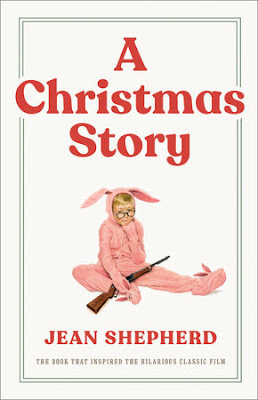
The annual year-endannouncement of new inductees into theNational Film Registry is always cause for excitement. Some films are chosenfor their aesthetic excellence, others for their social impact or historicsignificance. I was personally most thrilled by the inclusion of 1995’s Apollo13. Having written a biography of the film’s director and guiding spirit,Ron Howard, I know just how special this film is, and how challenging it was tomake. I was also pleased to see Ang Lee’s The Wedding Banquet on thelist. This 1993 romantic comedy about a Taiwanese immigrant to the U.S. ishilariously funny. Yet it also presents a serious glimpse of the complexitiesof being gay while remaining a part of traditional Chinese culture. But the commentariesI’ve heard about the new list have tended to focus on the fact that this year’scrop includes two family-favorite holiday movies, 1993’s The NightmareBefore Christmas and 1990’s Home Alone.
These were hardly the firstholiday films to make the list. A somewhat sardonic little flick called AChristmas Story was welcomed onto the registry ‘way back in 2012. A Christmas Story, released not long afterThanksgiving in 1983, at first attracted no particular attention. It then beganwinning awards, particularly in Canada, and has since spawned a cottageindustry of sequels, both in theatres and on television. I became interestedafter recently seeing a stage musical version (score by rising stars Benj Pasek and Justin Paul) that debuted on Broadway in 2012 and is now belatedly touringthe U.S. I’m not exactly a connoisseur of Christmas entertainment, but this waslively and fun.
A Christmas Story is based on a series of wry semi-autobiographical monologuescreated by radio humorist Jean Shepherd and published in his 1966 collection, In God We Trust, All Others Pay Cash.Shepherd helped write the screenplay for the film (co-written by directorBob Clark) and he serves as its narrator, the now-adult Ralphie Parker. YoungRalphie (played by Peter Billingsley) is growing up in a small Indiana town,circa 1940. He lives in a large but creaky old house with his small brother,his loving mom (Melinda Dillon), his cranky “old man” (Darren McGavin), ahighly temperamental furnace, a prize lamp that looks like a woman’s leg, and apack of ferocious dogs next door. Christmas is coming, and Ralphie has set hissights on the perfect gift from Santa: a Red Ryder Carbine Action 200-shot Range Model airrifle. But whenever he makes his wishes known, he gets the sameanswer: “You’ll shoot your eye out.” (This refrain becomes the musicalversion’s very best number, performed by a grade-school teacher whometamorphoses into a slinky tap-dancing vamp.)
The movie has so many fansthat the makers of the stage musical clearly felt obliged to include everymemorable moment. There is, for instance, a crabby (and, yes, inebriated)department-store Santa who shoves little kids down a colorfully snow-decoratedslide if they don’t respond quickly enough to his “What do you want forChristmas?” There’s the hideously pink bunny suit from dear Aunt Clara thatpoor Ralphie is required to model for his family. There’s the school buddy who responds to atriple-dutch-dare and gets his tongue stuck to a freezing flagpole. There arethe hungry next-door dogs who make off with the newly-roasted Christmas turkey. (When it comes to theatre,no one can resist seeing live animals on stage.) And there’s the happy wrap-upscene at a local Chinese restaurant. Personally, I don’t think small boys andguns go together, but this amiable show is hard to resist.
December 14, 2023
Scenes from the Long Happy Life of Agnès Varda: “Faces Places”
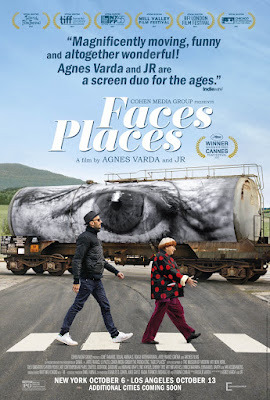
Agnès Varda, theBelgian-French filmmaker who left us in 2019 at the ripe old age of 90, was aforce to be reckoned with in European cinema. She was also one of the mosttruly adorable filmmakers around. Though she once hobnobbed with New Wavemasters like Jean-Luc Godard (and was married to Jacques Demy until his 1990passing), she was distinctively her own person. Small, petite, with a mop ofhair and a wonderfully impish face, she wrote, directed, and edited films upuntil the year of her death.
No wonder the film worldloved her. Such masters as Martin Scorsese, Ava Duvernay, and Guillermo del Toro sang her praises. In 2017 she became the oldest person everselected for an honorary Oscar; in that same year her Faces Places wasnominated for the Best Documentary Feature Oscar. Now the Academy Museum isdedicating a small but well-packed exhibit to her life and career. One wall(see below) features her unique self-portraits, in which she demonstrates herpassion for art—and for distinctive faces—by making herself into a series ofsaints and sinners.
Varda, always artisticallyrestless, explored both feature films and documentaries. One of her bestregarded early works is Cleo from 5 to 7 (1961),in which a Parisian pop star restlessly passes two hours while waiting for theresults of a biopsy. Just recently I was introduced to Vagabond (1985),in which Sandrine Bonnaire plays a young woman who has chosen to wander thewintry Languedoc countryside without education or goals. From the opening, weknow of her sad fate. But much of the film’s focus is on her interactions withthose who saw her last: a kindly Tunisian vineyard worker, a back-to-the-landphilosopher who tries to persuade her to raise goats, a housekeeper who enviesher “freedom,” some druggies who scheme to exploit her, a Good Samaritan femalebiologist who sees in her a fascinating curiosity.
Though the much-honored Vagabond is certainly downbeat, the same cannot besaid of 2017’s Faces Places (its original French title is VisagesVillages). Here the octogenarianVarda is seen on camera, making her own brand of art with co-conspirator JR, atall, lanky photographer some fifty years her junior. The two share a whimsicaljourney through small-town France, taking with them a van (tricked out to looklike a camera) that doubles as a travelling photo studio. Hobnobbing withresidents, they make photo portraits, then blow them up into huge postersplastered on the walls of local buildings. One elderly woman in the north ofFrance is the last inhabitant of a block of row houses once fully occupied bycoal miners and their families. A miner’s daughter herself, she doesn’t want tomove, because her surroundings are toofull of memories. Imagine her surprise when she walks out her door anddiscovers, three stories high, her own face looking down at her.
The film is full of suchcelebrative moments, although the locals aren’t always sure they like their newpublic notoriety. In a nod to women, Varda and JR decorate a stack of docksideshipping containers with the bold imagesof three wives of shipyard workers. They have fun with one another too: hedecorates the tank cars of a local train with photos of her wide eyes and“too-small” feet. And, after hours, hegaily pushes her through the Louvre in a wheelchair, moving at a wild clip sothat the fabulous art on display skips by.
All this helps make up forthe chilly, puzzling brush-off by Godard near the film’s end.

Scenes from the Long Happy Life of Agnès Varda; “Faces Places”

Agnès Varda, theBelgian-French filmmaker who left us in 2019 at the ripe old age of 90, was aforce to be reckoned with in European cinema. She was also one of the mosttruly adorable filmmakers around. Though she once hobnobbed with New Wavemasters like Jean-Luc Godard (and was married to Jacques Demy until his 1990passing), she was distinctively her own person. Small, petite, with a mop ofhair and a wonderfully impish face, she wrote, directed, and edited films upuntil the year of her death.
No wonder the film worldloved her. Such masters as Martin Scorsese, Ava Duvernay, and Guillermo del Toro sang her praises. In 2017 she became the oldest person everselected for an honorary Oscar; in that same year her Faces Places wasnominated for the Best Documentary Feature Oscar. Now the Academy Museum isdedicating a small but well-packed exhibit to her life and career. One wall(see below) features her unique self-portraits, in which she demonstrates herpassion for art—and for distinctive faces—by making herself into a series ofsaints and sinners.
Varda, always artisticallyrestless, explored both feature films and documentaries. One of her bestregarded early works is Cleo from 5 to 7 (1961),in which a Parisian pop star restlessly passes two hours while waiting for theresults of a biopsy. Just recently I was introduced to Vagabond (1985),in which Sandrine Bonnaire plays a young woman who has chosen to wander thewintry Languedoc countryside without education or goals. From the opening, weknow of her sad fate. But much of the film’s focus is on her interactions withthose who saw her last: a kindly Tunisian vineyard worker, a back-to-the-landphilosopher who tries to persuade her to raise goats, a housekeeper who enviesher “freedom,” some druggies who scheme to exploit her, a Good Samaritan femalebiologist who sees in her a fascinating curiosity.
Though the much-honored Vagabond is certainly downbeat, the same cannot besaid of 2017’s Faces Places (its original French title is VisagesVillages). Here the octogenarianVarda is seen on camera, making her own brand of art with co-conspirator JR, atall, lanky photographer some fifty years her junior. The two share a whimsicaljourney through small-town France, taking with them a van (tricked out to looklike a camera) that doubles as a travelling photo studio. Hobnobbing withresidents, they make photo portraits, then blow them up into huge postersplastered on the walls of local buildings. One elderly woman in the north ofFrance is the last inhabitant of a block of row houses once fully occupied bycoal miners and their families. A miner’s daughter herself, she doesn’t want tomove, because her surroundings are toofull of memories. Imagine her surprise when she walks out her door anddiscovers, three stories high, her own face looking down at her.
The film is full of suchcelebrative moments, although the locals aren’t always sure they like their newpublic notoriety. In a nod to women, Varda and JR decorate a stack of docksideshipping containers with the bold imagesof three wives of shipyard workers. They have fun with one another too: hedecorates the tank cars of a local train with photos of her wide eyes and“too-small” feet. And, after hours, hegaily pushes her through the Louvre in a wheelchair, moving at a wild clip sothat the fabulous art on display skips by.
All this helps make up forthe chilly, puzzling brush-off by Godard near the film’s end.

December 12, 2023
The Ghost of Romance Past
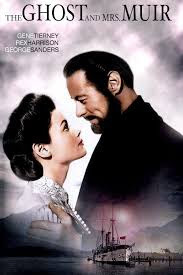
Hollywood, it seems, lovesghosts. Just think of the Ghostbusters franchise, and the schmaltzyromance beyond the grave known simply as Ghost.In that 1990 film, Patrick Swayze appears post-mortem to his love, played byDemi Moore, to the throbbing strains of “Unchained Melody,” in what has turnedout to be the sexiest pottery-making scene of all time.
Much earlier in the 20thcentury, there was another popular ghostly romance, though one decidedly moreprim. In 1947 the ubiquitous Joseph L.Mankiewicz directed The Ghost and Mrs. Muir, based on a popular Britishnovel though shot entirely on the coastline of California. The starring roleswere taken by Gene Tierney (yes, Laura herself) and Rex Harrison (fresh fromthe male lead in the non-musical Anna and the King of Siam). She plays a young widow too independent inspirit to commit to life with her former mother-in-law. Decamping with heryoung daughter (an 8-year-old Natalie Wood, already a screen veteran), shefalls in love with a seaside home that is rumored to be haunted. And so it is .. . by an irascible ship’s captain determined to scare off potential buyers.Though his original hope is to convert the house into a home for aged seamen,he soon develops a soft spot for the plucky widow who alone can see him.
Mrs. Muir is determined to bewhat she considers a modern woman. (At several points, the charactersremind one another that they’re now living in the 20th century,though they still light gas lamps and her skirts trail the ground.) When Capt.Gregg persuades Mrs. Muir that she should be on the lookout for a living malewho can love and sustain her, she falls for Uncle Neddy, a successful author ofchildren’s books. Since he’s played by the often dicey George Sanders, theaudience certainly wonders how this human romance is going to play out. ThoughSanders was yet to take on his most indelible role, that of the cold-bloodedAddison DeWitt in All About Eve, he ultimately shows himself here as anequally untrustworthy type. Poor Mrs. Muir—but when we skip ahead in time weget a conclusion that is both bittersweet and entirely satisfying.
I won’t give away the endingof The Ghost and Mrs. Muir here. Suffice it to say that its charms are ofan old-fashioned sort, one that demands that the plight of its characters betaken seriously. I’m assuming that the same held true in the several radio andtelevision versions of this popular material that surfaced between 1947 and1974. But when it was transformed into a TV series that ran from 1968 to 1970,with Hope Lange and Edward Mulhare in the leading roles, the emphasis was onsitcom hijinks. In April 1994, Variety reported that there would be aTwentieth Century Fox remake of the movie, with Sean Connery perfectly cast asthe irascible but ultimately tender Captain. Alas, it was not to be.
,In its own day, The Ghostand Mrs. Muir was perhaps best admired for its romantic Bernard Herrmannscore, and for its Oscar-nominated cinematography. But romantically-inclinedvoters from the American Film Institute have chosen it as #73 among its 2002listing of 100 Years . . . 100 Passions. Casablanca was named #1, GoneWith the Wind #2. West Side Story #3. And The Way We Were,about which I’ve recently written, came in at an unlikely—to me, atleast--#6, ahead of such unarguably romantic flicks as Doctor Zhivago, LoveStory, and The African Queen. Oh well.
December 8, 2023
The Way We Were – and Weren’t
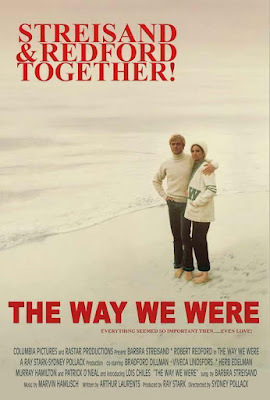
The death of NormanLear—writer, producer, social crusader—has set us all to thinking about theways that mass media can influence public opinion. Lear’s creation in 1971 of alovable bigot, Archie Bunker on TV’s All in the Family, launched householdconversations that are still going on. It was the start of the era in which theso-called “boob tube” was used for something other than benign entertainment,in which the tough issues of the day were explored, in a humorous but pointedcontext.
After nine seasons of Allin the Family, Lear created many other TV series, most of them exploring howpeople of different backgrounds come together, and are pulled apart. Notcontent to weave his own views about tolerance and progressive politics intoteleplays, Lear in 1980 introduced People for the American Way, animportant advocacy group meant to combat the right-wing views of the so-calledMoral Majority. He was hardly one to keep silent in the face of injustice.
I have no idea what NormanLear thought of Sydney Pollack’s 1973 film, The Way We Were. Thisbittersweet romance between a politically left-wing Jewish gal (BarbraStreisand) and a hunky college athlete with writing skills and WASPself-importance (Robert Redford) was beloved by many for its mating of two topstars of the era as well as for a title ballad that has never gone out ofstyle. The Way We Were, adapted by playwright Arthur Laurents from hisown novel, was nominated for six major Oscars, winning for both its song andits musical score. It also made major waves at the box office. I suspect Learmight have responded to the film’s central idea of opposites attracting, butwould have liked it better if Pollack hadn’t been forced by his studio to cutheavily the section dealing with McCarthyism and the Hollywood blacklist.
As for me, seeing The WayWe Were again after so many years, I find I am not a fan. Still, though Ihave always resisted the charms of Barbra Streisand, I can’t help but praiseher for a funny and heartfelt performance. Her Katie Morosky is someone worthpaying attention to, both when she’s weak and when she’s strong. On the otherhand, I have no great love for Robert Redford’s performance as the fecklessHubbell Gardiner. We’re supposed to believe he’s a sensitive and immensely giftedwriter, one who can achieve the upper echelons of his craft based on his skillalone. But all I saw on screen was a blandly handsome guy with a Malibu beachhouse and a poor taste in friends. He seems shallow, and Katie’s long-terminfatuation with him makes her a bit shallow as well. With all her smarts, it’sa shame she can’t make a better choice of soulmates. And the political/socialcontext that is supposed to add to the film’s meaning is skipped over solightly that it might as well not be there at all.
My colleague Julia L. Mickenberg,who specializes in women’s history at the University of Texas at Austin, has aunique perspective on this film. Her recent online piece for Ms.relates to the once-celebrated Jewish author and activist Eve Merriam, aboutwhom she is currently writing a biography. Merriam, it seems, was a closecollege friend of Arthur Laurents, and served as his model for the KatieMorosky character (created by Laurents with Streisand in mind). She was also animportant public figure in her own right. A big thank-you to Julia for addingto my understanding of a forgotten but fascinating figure.
December 5, 2023
Maestro: Cigarettes and Love, Lenny-Style
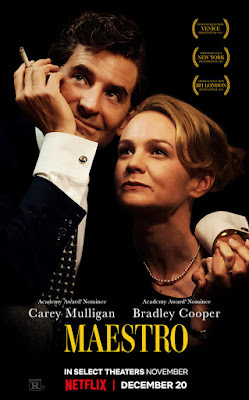
Leonard Bernstein was anintegral part of my childhood, and maybe yours too. From 1958 to 1972, he was on television with the NewYork Philharmonic, explaining to kids in a compelling way the joys of classicalmusic. Then there were the musicals he composed that set our toes a-tapping: Onthe Town, West Side Story, Candide. I discovered the lively filmversion of On the Town (about three sailors on shore leave in New YorkCity at the height of World War II) long after its release in 1949. When West Side Story came out on filmin 1961, it was seen by everyone I know, and long afterward the infectiousscore was still buzzing around in our heads. Though the much more recentSpielberg version of West Side Story may have its virtues, no one canrob us Baby Boomers of our affection for the original.
But it’s only now thatBernstein himself is on film, not as a composer but as the leading man of abiopic. Bradley Cooper, inspired by the memoir by Bernstein’s daughter Jamie,had long wanted to put his complicated life on film. Ultimately, Cooper was tobe a triple (at least) threat: as co-writer, director, and star of this laborof love. Much has been made of the prosthetic nose used to transform himvisually from Bradley into Lenny. At the theatre where I saw this film (soon toshow up on Netflix), photos of the real Bernstein in various stages of lifereveal just how close the makeup artists got in transforming a Philadelphiagentile into a New York Jew.
Far more important thanCooper’s look, however, is the spirit he brings to this role. His Lenny issmart, funny, impetuous, wildly sociable, nicotine-addicted, and whollydedicated to his role on the music scene. He’s also far more attracted to menthan to women, a distinction the film makes early on in showing a life-changingmoment. He’s roused from sleep in the early morning hours by a phone calltelling him that the great Bruno Walter, slated to be a guest conductor of theNew York Philharmonic, is down with the flu. As the orchestra’s assistantconductor, the 26-year-old Lenny needs to pick up the baton—without rehearsal.He makes the appropriate sounds of regret, hangs up the phone . . . andindulges in a triumphant yell of which Tarzan would be proud. Then, jumpinginto a bathrobe, he affectionately pats the behind of the young man who hadbeen sharing his bed, and heads for Carnegie Hall. In one of the film’s manysurreal moments, he arrives in that grand space, still in his bathrobe, readyto take on the world.
But Maestro is not solelyabout Lenny. The film’s focus is his marriage to Felicia Montealegre, played bythe always luminous Carey Mulligan. From the start, Felicia knows her husband’ssexual predilections, but is at first willing to overlook them for the sake ofhome and family. Ultimately the tensions within the home threaten to destroy it(in a scene cleverly staged as the gigantic balloons of the Macy’s ThanksgivingParade pass by the Bernsteins’ Central Park West window). Still, the genuinelove between these two talented and complicated people is what the film is allabout. This nicely fits the genuine Bernstein quote that opens the film: “Awork of art does not answer questions, it provokes them; and its essentialmeaning is in the tension between the contradictory answers." Quite so.
See this in a theatre, if youcan, to revel in the Bernstein score.
December 1, 2023
Postcards from Princess Leia: Jeff Ryan Explores an Inter-Galactic Bond
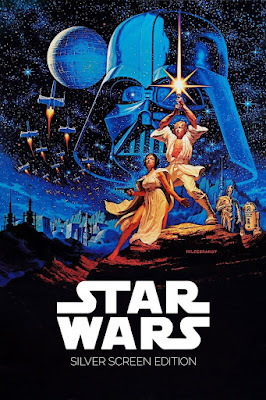
I just read, in the LosAngeles Times, about a religious cult that believes our world is guided byGalactics, most of them dead celebrities. And yes, Carrie Fisher’s name is onthe list. There’s something about Fisher, better known to many of us asPrincess Leia Organa of Alderaan, that transcends the usual Hollywood hype. Inlife and in death, she was not so much a movie star—and pretty much the solefemale in a blockbuster series of outer-space epics—but also both a role modeland a cautionary tale. As a royal whohas her ups and downs in six Star Wars films, starting with theso-called Episode IV: A New Hope in 1977, she is powerful and pragmatic.But she also tends to get kidnapped, humiliated, and made to wear wackycostumes (Those hair buns! That kinky harem outfit!). Fisher’s personal lifewas equally complicated: the well-heeled daughter of celebrities, she foundfame early, but also faced marital disaster as well as serious addictionissues. Always honest with herself and her public, she eventually owned up tothe bipolar disorder that helped to shorten her life, as a way to make thepublic aware of mental health challenges.
Jeff Ryan clearly reveresCarrie Fisher, both for her contributions to pop cinema and for her forthrightapproach to her own failings. That’s why, when the publishing industry let himdown, he launched a successful Kickstarter campaign to make his tribute toFisher a reality. The result is a handsome 2023 volume called YourWorshipfulness: Starring Carrie Fisher as Princess Leia. Ryan’s is by nomeans an insider biography. Following Carrie’s sudden fatal heart attack in2016, he never approached her colleagues, nor her bereaved family. Much of hisresearch comes from published sources, including fan sites on the web and the memoirsof others involved in the Star Wars universe. He also delves deeply intoFisher’s own writings: her four novels and such non-fiction works as WishfulDrinking, in which she confronts her own topsy-turvy life.
With affection and wit, Ryansizes up what it was like to BE Carrie Fisher, paying special attention to hercomplicated but affectionate bond with her famous mother, one-time Hollywoodcutie-pie Debbie Reynolds. (Postcards from the Edge—a 1987 Fisher novelabout mother-and-daughter celebrities that later became a Meryl Streep screenhit—clearly reflects something of her own parental memories.) We also learn throughRyan’s book about the father who neglected her. (“Nice-guy” singer EddieFisher, whose marriage to Reynolds was at one time big Hollywood news, famouslydumped Debbie when Carrie was two years old to marry the newly bereavedElizabeth Taylor.) There’s also dish about Carrie’s short-lived marriage(1983-1984) to singer/songwriter Paul Simon. The strained relationship allowsRyan, always a clever wordsmith, a chance to get snarky: “They had not enoughbridge, way too much troubled water.”
Perhaps the most engrossingpart of the book for me was the in-depth discussion of 2019’s Star WarsEpisode IX: The Rise of Skywalker. The final triad of Star Wars filmswere meant to showcase what became of the famous trio—Leia, Luke, and HanSolo—as they grew older and the universe moved on. But Carrie’sunexpected death challenged George Lucas and his crew to figure out somecreative solutions to her absence. They couldn’t ignore Leia, nor could theyre-cast her. In the end, up-to-the-minute technology made all the difference,allowing the filmmakers to suggest Leia’s presence, even in the absence of thevery special woman who embodied her. As Ryan himself might say, Good night,sweet Princess.
November 28, 2023
A Singular Film by John Singleton: Boyz N the Hood
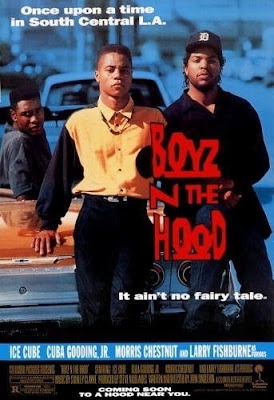
About a month ago, theairwaves were filled with tributes to Richard Roundtree, dead at 81. Back in 1971, at age 29, Roundtree soared to internationalcelebrity in Shaft. The story of a tough, sexy Black detective combingthe mean streets of Manhattan helped launch the blaxploitation craze, in whichcrime dramas, martial arts dramas, and the occasional urban comedy featuredAfrican American casts, raw languages, and funky musical scores. As anunderling at Roger Corman’s down-and-dirty New World Pictures, I worked on myshare of blaxploitation flicks, but ours tended to emphasize femalenudity. We were the first to corral thetalents of the bodacious Pam Grier, but my most vivid memory of that era isworking on 1975’s TNT Jackson, in which a Playboy centerfoldnamed Jeanne Bell played a kung fu expert fighting off bad guys in Hong Kong.
The blaxploitation era as awhole had the virtue of helping talented Black performers become stars. But itdidn’t make for the world’s best movies. Cut to 1991, the year when a24-year-old writer-director set Hollywood a-buzzing with a coming-of-age dramaset in South Central L.A. Boyz n the Hood started out as part ofSingleton’s application for the famous USC Film School. Feeling deeplyconnected to the gang-ridden urban environment in which he himself had grownup, he knew from the start that this was material he had to direct himself.Which didn’t mean he made the film in a vacuum. Some of the early materialinvolving four young boys checking out a dead body was influenced by the 1986film, Stand by Me. And when he sold his script to Columbia Pictures in1990, the greenlight came quickly because of the box office success of SpikeLee’s 1989 streets-of-Brooklyn masterpiece, Do the Right Thing.
Singleton’s story, whichleaps seven years at mid-point, explores what it’s like to grow up in an areadominated by gang violence. At ten, the little boys of the Crenshawneighborhood of South Central, are already aware that they can easily becometargets. There are roughnecks around to taunt them, and the local police(including an arrogant Black cop) are less than helpful in keeping trouble atbay. Young Trey has the advantage of a tough-love dad determined to keep him onthe straight and narrow; young Ricky is a budding football talent. But as thissection ends, Ricky’s half-brother, the chubby Doughboy, is already being arrestedfor shoplifting. The stage is set for the drama that is to follow.
As a very young filmmaker,Singleton was helped by a cast that contained old pros as well as some brightnew talents. The script’s essential father figure, “Furious” Styles, was portrayed by the gifted Laurence Fishburne, who’dplayed major stage roles and been featured in films like Apocalypse Now andThe Color Purple. Fortunately, Singleton had met him on the set of Pee-Wee’sPlayhouse¸ where he was working as a production assistant and securityguard. Day jobs have their uses: Singleton met Ice Cube while serving as anintern on the Arsenio Hall Show, then gave him a central role (as theteen-aged Doughboy) that has propelled the rapper into a major acting career.The elegant Angela Bassett played her first significant film character as Trey’supwardly mobile mother Reva in Singleton’s film; both Cuba Gooding Jr. andMorris Chestnut—as 17-year-old Trey and Ricky—essentially began their careerswith Singleton. (Bassett has since become a two-time Oscar nominee, and Goodingwon the supporting actor statuette in 1996 for Jerry Maguire.) Nia Longand Regina King can be spotted too.
November 23, 2023
Shine On, Flower Moon: Scorsese on the Prairie
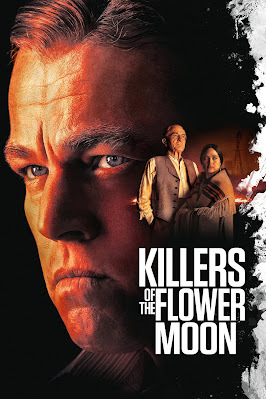
Recently I’ve heard fromseveral admirers of David Grann’s 2017 bestseller, Killers of the FlowerMoon: the Osage Murders and the Birth of the FBI. These readers—including Jack El-Hai, a colleague known for his work asa biographer—are disappointed by Martin Scorsese’s new film adaptation ofGrann’s book. They find the film, among other things, too long, too lacking insympathetic characters, and too focused on one family’s egregious behavior tocapture the magnitude of the problem the book confronts.
I can’t agree with them,partly because I’ve never read Grann’s book. So I don’t exactly know what waslost in the transfer from page to screen. I do know that the filmmakers, deeplyaware of the strong emotions invested in this project by indigenous groups,worked hard to avoid any accusation that this was a “white savior” project.They didn’t want this, in other words, to be one of those movies in whichwhite-skinned men of good conscience rescue suffering Native Americans fromtheir oppressors. Scorsese even goes so far as to make an appearance at thebeginning of the film, spelling out his intentions. And I’ve heard that starLeonardo DiCaprio, a longtime Scorsese collaborator, made the gutsy decisionnot to star as an heroic FBI agent but rather to play a not-too-bright WorldWar I veteran whose credulous nature contributes to the disastrous love storyat the center of the film version.
Taking the film as a film—andnot as an adaptation of an important book—I have to say that I found itenthralling. Though well over three hours long, it caught me in its grip andwouldn’t let go. Partly this is a matter of a brilliant production design, bestappreciated on an IMAX screen. I will long be haunted by the memory of Osagemen, having sadly concluded that their traditional way of life is dead andburied, suddenly reveling in a spurting plume of crude oil on their land. Andthere’s a stunning moment much later in the film when firefighters battling anarson blaze seem like inhabitants of Dante’s Inferno.
Moviegoers who have watchedloads of classic westerns will be enthralled by this apparently authentic lookat the Osage people, circa 1920, following the discovery of oil. These NativeAmericans do not live in wigwams or hogans, nor do they dress in buckskin andwear feathers in their hair. Now wealthy because of their land rights, theyspeak good English, attend the local Catholic church, and glide into their squalidOklahoma town in taxis driven by white men. Young women like Mollie may proudlywrap themselves in tribal blankets, but also cover their heads in stylishchapeaux. Played by rising star Lily Gladstone, Mollie is hardly the patheticlittle squaw of many a western. Strong and spirited, she has no problem inchoosing DiCaprio’s Ernest as her husband, and sharing with him (at least atfirst) an intense connubial life.
If Ernest doesn’t seem worthyof his bride, it’s at least partly because of his allegiance to his uncle,played by Scorsese regular Robert De Niro as William King Hale. In hisillustrious career, De Niro has played many bad hombres. But there must be aspecial circle of hell for the man he portrays here. King Hale speaks the Osagelanguage and loudly touts his friendship with the Osage people. But ultimatelyhis eye is on those lucrative Osage land rights, and the devil take theconsequences.
A clever (thoughcontroversial) device at the film’s end invites us to put this tragic storyinto perspective. Bravo, Mr. Scorsese.
Beverly in Movieland
- Beverly Gray's profile
- 10 followers



